My family and I are planning to sell our house in Portland, Oregon soon and, as I've had to do a couple of times in the past 20 years, I must cull some vine maples that are threatening power and phone lines to our house. Until I recently found this forum and read Gordon's excellent build-along, I had no idea that they are not weeds!

I still have another two similar trees to harvest but, as you can see below, the tree was pretty straight after felling and limbing. These photos are from +/- 45 degree angles on the downhill side (future belly side). You can still barely see a small part of the notch I cut for the felling hinge to drop it in the downhill direction:
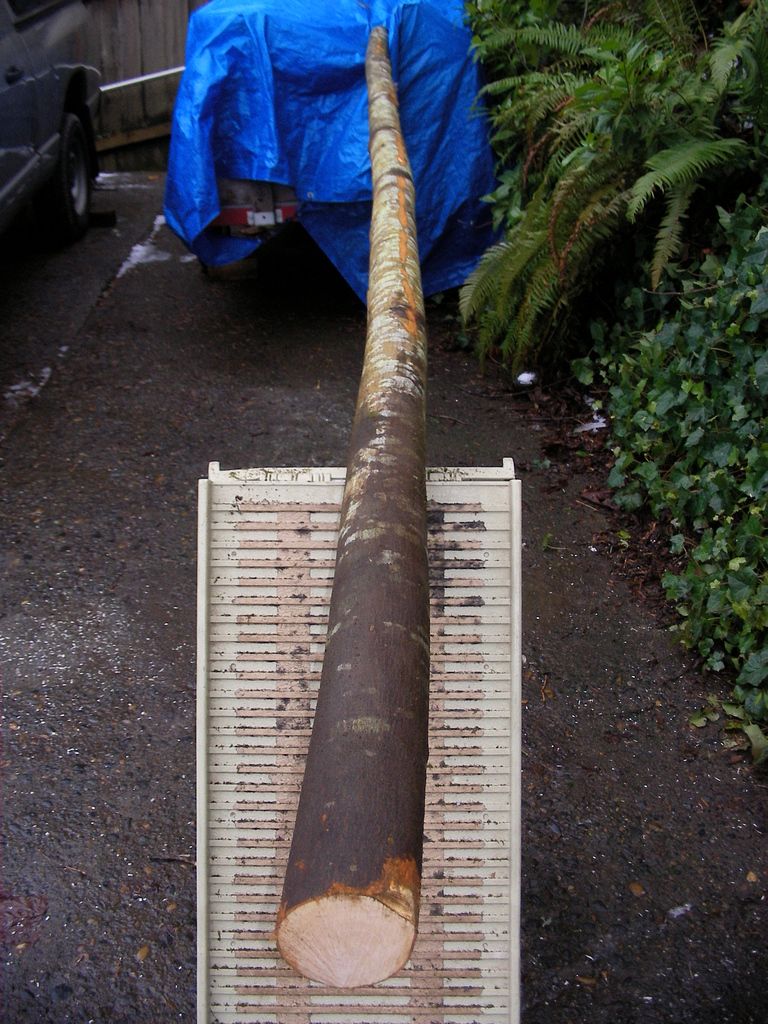

The log is almost 5" in diameter at the base and has what appeared to me to be 183" of useful length in it. So I cut it again into two logs, and split them into four staves (two bottom and two top staves). I expected to only use the uphill (more skyward facing) halves of the slightly bending (for a vine maple) logs. The interesting thing is the bottom "skyward" stave has some reflex after splitting, as I expected, but the higher staves are backwards. (After splitting the "top" log, the upper sky-facing half is straight and the half that was under compression is still bent a little). I doubled checked the grain of the end cuts, just in case I mis-labeled the top log, and sure enough--the top log is behaving backwards from the bottom log. Does this make any sense?
Given that this is my first bow, I decided to debark the straight bottom stave first and save the more desirable (I think) reflexed bottom stave for later. Here is the debarked straight bottom stave:
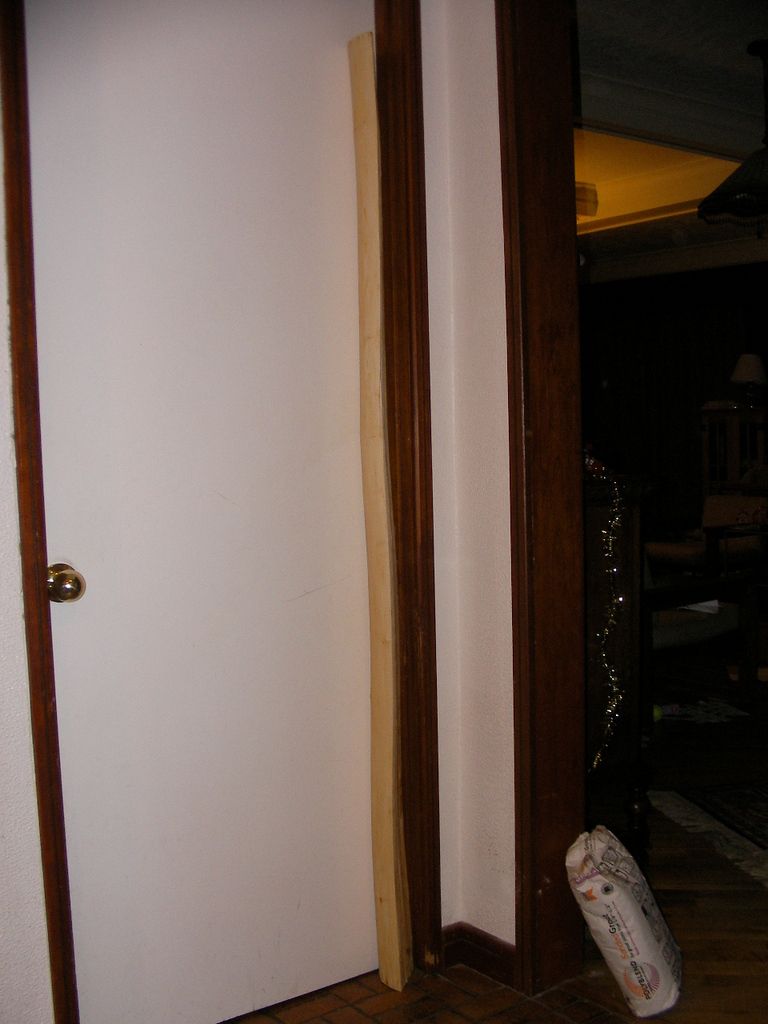
And here is the reflexed bottom stave (still to be debarked):
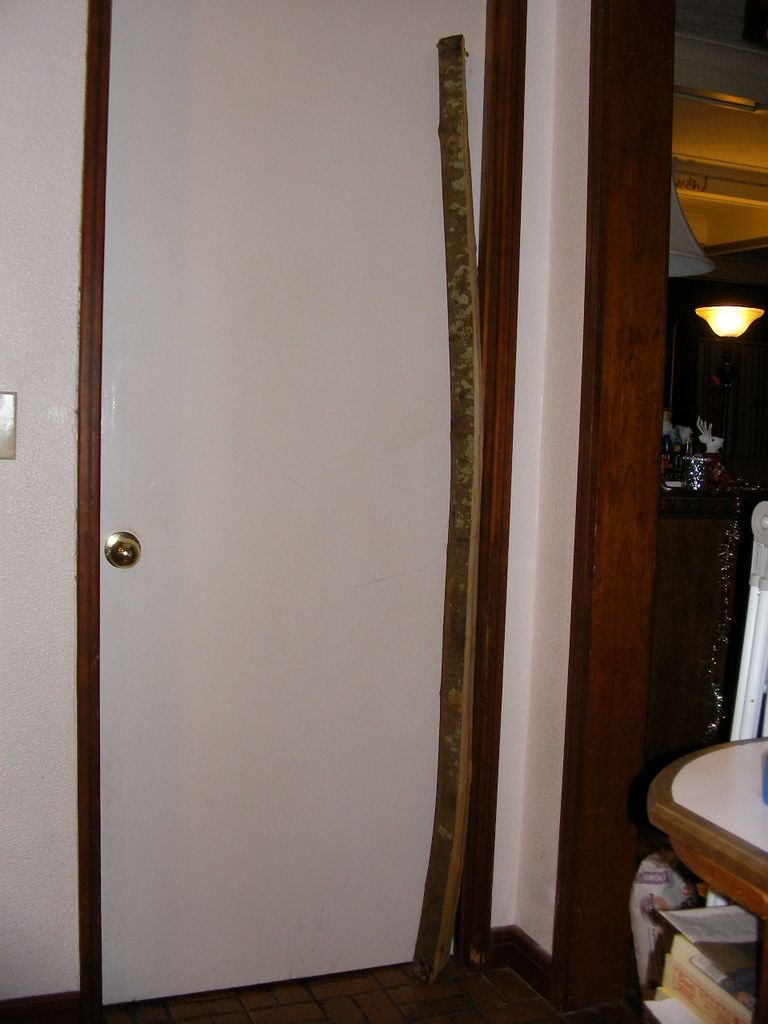
And a couple more photos of the debarked "practice" stave"
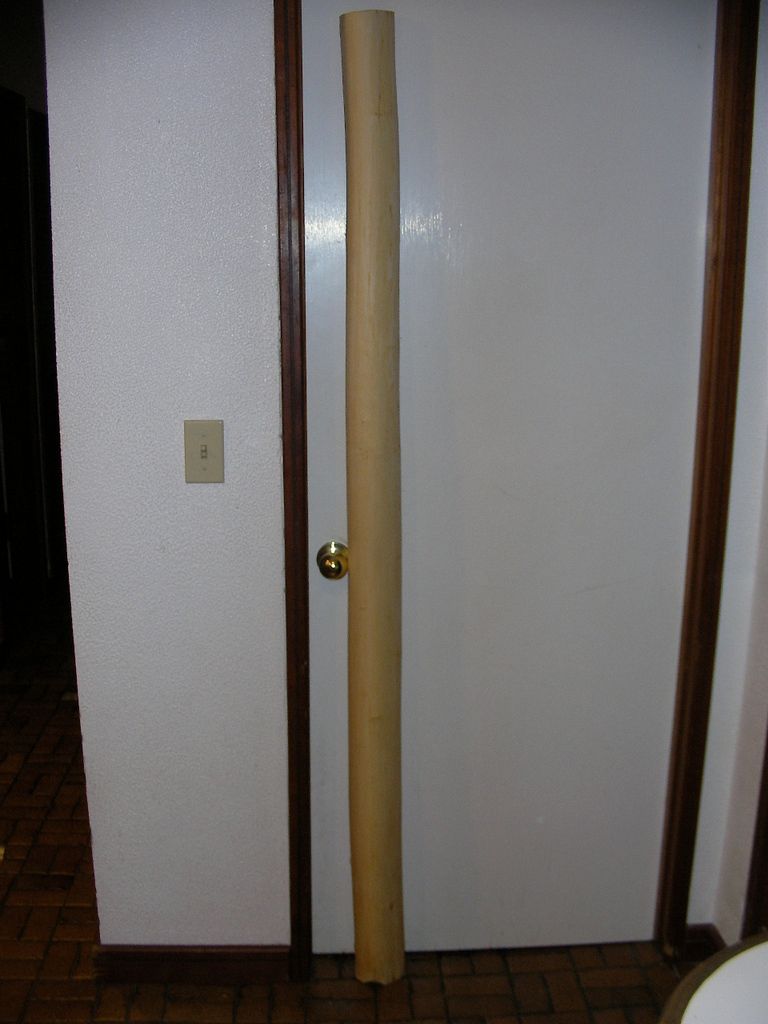
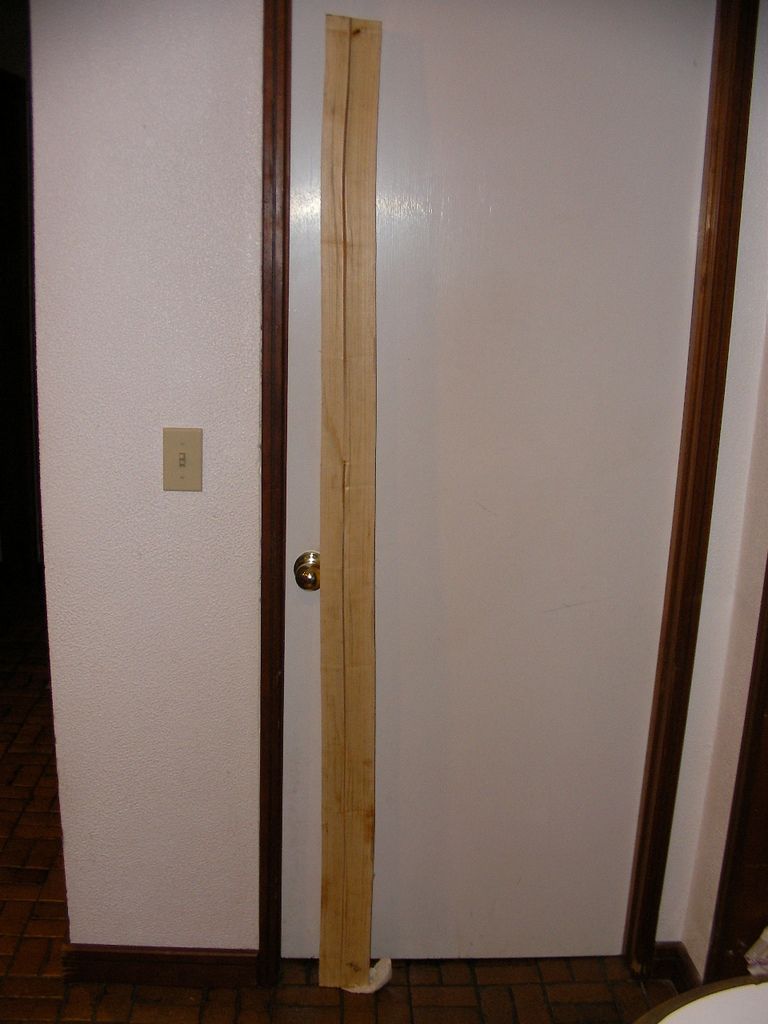
Really straight, isn't it? Maybe I cut down and debarked something other than a vine maple!

Speaking of debarking...I can't find much information about technique. It took me about three hours on this first stave and, though I've sped-up, I don't see how I can do it in much less than about two hours. Is that reasonable? The bark does pull-off by hand, when it happens to lift a little, but the strips are narrow and too short to make haste of them. The best technique I've found is to flip the handles around on my home made draw knife and scrape the sharp side of the blade along the bark to shave it off. I don't actually draw the knife edge, because I could easily cut past the bark that way. Actually, the non-beveled square edge of the blade works too, but it's not quite as fast at shaving bark as the sharp side drawn like a barber's razor across one's face. I've found that when I hit harder wood under the bark, the tool doesn't tend to want to shave it and I know I'm done (and also the surface doesn't turn back to a brown color, which indicates there's more bark to remove).
Am I doing this correctly and efficiently? There's not much info about technique out there. If it takes me two hours per stave, I've got about a day of work ahead of me for the three vine maples that has to be done before they dry out. Here's my tool (I plan to clean-up my grind and stone it better and, if necessary, heat treat with Kasenit before using it to help me cut out my bow along with a hatchet):

Should I go ahead and finish this bottom "practice" stave into a bow? What does everyone think about the viability of the "top" staves?
This is my first bow since I made a recurve in Jr. High shop class about 45 years ago and it's my first self-bow ever (and my first post here). I'd sure appreciate any and all advice and comments!
P.S. All the post verification questions are actually quite tough to complete correctly. Do these go away after a certain number of posts? It sure makes it tough to make a brief and quick post (unlike this first one of mine).